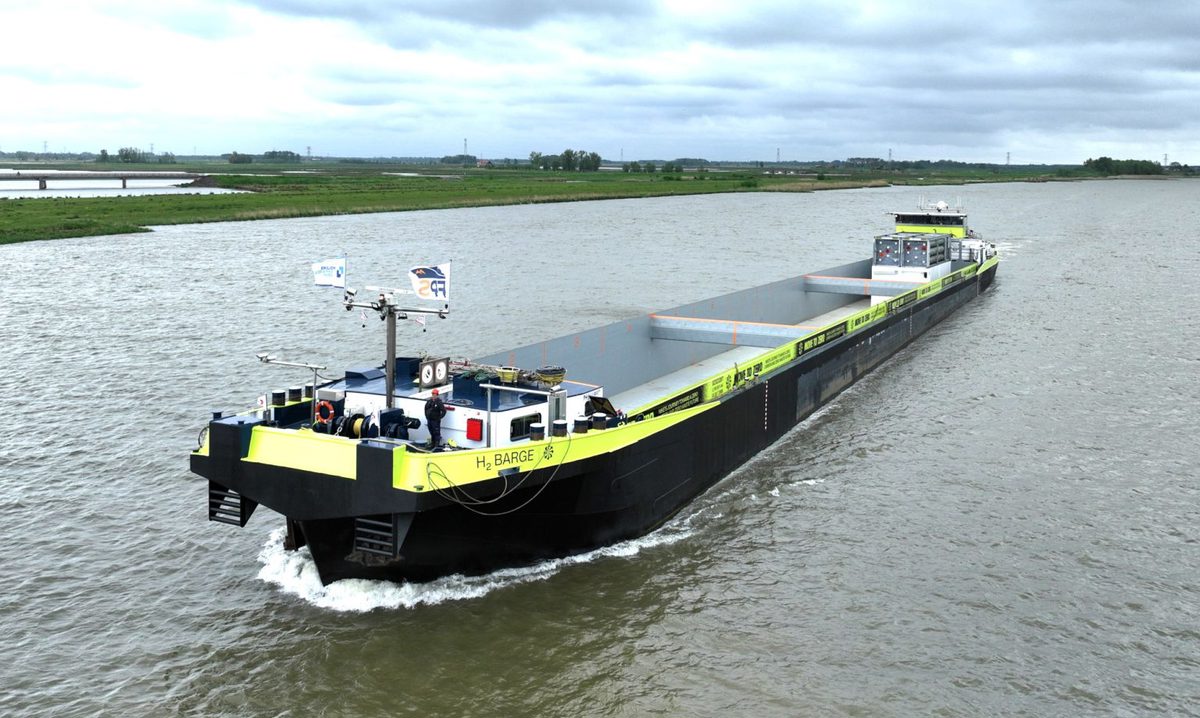New survey reveals maritime offtake mismatch with e-fuel supply predictions
A joint survey by the Zero Emission Maritime Buyers Alliance (ZEMBA) and Lloyd’s Register (LR) reveals a “disconnect” between e-fuel supply forecasts and maritime offtake agreements.
 PHOTO: Nike's hydrogen-capable H2 Barge 1 vessel. Future Proof Shipping
PHOTO: Nike's hydrogen-capable H2 Barge 1 vessel. Future Proof Shipping
The survey is based on response from 32 e-fuel providers and 15 ship operators. E-fuels or synthetic fuels are produced from green hydrogen and recycled or captured CO2 as feedstock and renewable energy as a power input.
It reveals that these 32 respondents had submitted a total of 269 proposals to the maritime industry for e-fuel offtake agreements, with 26 respondents actively engaging with potential buyers for over two years.
Despite this level of engagement, “there remains a disconnect between e-fuel production projects and ship operators securing e-fuel offtake,” the report highlights.
Demand-supply mismatch
The survey has evaluated 62 e-fuel production projects from these producers. It found that 53 of these projects are still in the pre-final investment decision (FID) stage, dealing with uncertainties around financing and approvals. Only nine projects have reached the post-FID stage, where funding is secured, approvals are in place and construction is underway.
Total annual production from these nine projects is projected to reach 391,000 mt of heavy fuel oil equivalent of e-fuels (mtHFOe) by 2027 and 1.07 million mtHFOe/year by 2030. This includes e-methanol and green ammonia as the report highlights that there are no e-methane projects in the post-FID stage by 2030.
Around 22 producers have identified the maritime sector as their top priority for e-fuel deployment in the survey. This means that out of the total production, a potential 304,000 mtHFOe/year of e-methanol and green ammonia could be directed towards shipping by 2027, and 830,000 mtHFOe/year by 2030, according to the report.
However, only two of the 62 evaluated e-fuel production projects have secured binding offtake agreements with the shipping sector, leaving large volumes of e-fuel still available for maritime uptake, the report notes.
Need for offtake agreements
“Despite the robust projections for e-fuel production, many e-fuel development projects are facing financing gaps that hinder their ability to reach FID,” the report explains, “this suggests that there is a significant bottleneck of e-fuel projects waiting for financing, which could have major implications for the decarbonization of the maritime sector.”
For instance, Danish energy company Ørsted recently shelved its 50,000 mt/year e-methanol project due to the lack of financially viable long-term agreements and high development costs. Another methanol producer, Methanex told ENGINE that while rising dual-fuel vessel orders could boost producers' confidence in supply infrastructure, actual investments depend on sales contracts to underwrite low-carbon fuel projects.
LR and ZEMBA's survey finds that high operational costs, lack of bunkering infrastructure, regulatory uncertainty and misaligned supply-demand dynamics discourage ship operators from committing to long-term agreements.
“Challenges related to infrastructure development, global trade trends, and an uncertain global regulatory environment could impact the willingness of the maritime sector to offtake e-fuels and consequently, their willingness to offer e-fuel powered services to willing freight customers,” the authors note.
By Konica Bhatt
Please get in touch with comments or additional info to news@engine.online





